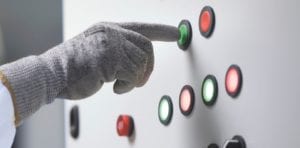Full disclaimer: I’m no doctor. My training in the healthcare industry only goes as far as an industrial first aid course. But let’s say you’re getting heart surgery. It’s pretty hard to sew something onto your heart while it’s still beating, so, using the miracle of modern technology, we can stop your heart while maintaining blood flow so you don’t wake up dead. But what if your nightmares come true and the power goes out? We need effective electrical systems that can react quickly to trouble like this, to avoid unnecessarily risking the lives of patients.
Obviously it’s a worst case scenario, but it points to how crucial a good power distribution system is for hospitals. Even today, only around one in twenty hospitals in the U.S. are prepared for power failures. In case of failure, critical areas like operating theatres and emergency wards will cut power and switch to a backup system in half a second max. What if the backup systems fail, like they did in a Saskatoon hospital a short while ago? The failure was blamed on old infrastructure, and, luckily, no one was harmed, but it’s still a serious issue, especially when patient safety is on the line.
Monitoring Power
High quality care for patients is any hospital’s number one priority. Good power monitoring technology together with effective design, operation, and maintenance of the electrical distribution system are paramount if a hospital is to meet that goal. Of course, this is a challenge, as hospitals have to integrate a variety of critical and non-critical services, from intensive care wards to parking and laundry, each needing different configurations and backups. The key to balancing these different services lies in power availability and reliability.
Good power availability and reliability can be achieved by following three main principles: using resilient electrical systems and redundancies, regularly scheduled maintenance, and adaptable infrastructure design that allows for easy upgrading and innovation. Along with power monitoring and control systems, these principles help to ensure that power is available as often as possible, and that it functions efficiently with the range of services and equipment the hospital provides.
Know more about energy efficiency for Hopsitals, download our white paper


Conversation
I used to work for Schneider and for 4 years now I’m the director of sales of MAQUET CaRDIOVASCULAR &CRITICAL CARE.
We do per year -in the Middle East- close to 100 O.R. ! How we can work together ?